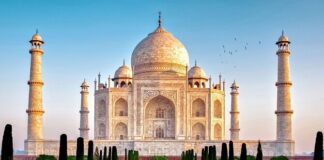Embark on an enchanting journey where time stretches endlessly before you, where every moment is savored, and each experience blooms with depth and meaning. In our fast-paced world where the tyranny of the clock dictates our moves, discover the magic of slow travel —an inviting path less trodden, that beckons you to immerse yourself completely in the rhythm of a land and its people.
Slow travel isn’t just a way to see the world; it’s a way to truly connect with it. This transformative approach to travel invites you to dive into the soul of a place, to linger longer, engage more authentically, and celebrate the intricate tapestry of local life. It’s about forging genuine bonds with the communities you visit, understanding traditions, and cultivating an enriching sense of place that turns your journey into more than just a trip—it becomes a chapter in the narrative of your life.
Set aside the hurried itineraries and the ticking boxes of ‘must-see’ landmarks. Instead, give yourself the gift of time—time to explore hidden corners, to taste every flavor, to capture stories, and to create memories that resonate with the symphony of authentic experiences. Slow travel is calling you to savor the world in its purest form. Will you answer?
Understanding Slow Travel
Slow travel is an approach to travel that emphasizes deeper exploration over superficial experience, quality over quantity. It is an invitation to take your time, to immerse in local life, and to forge a connection with the place you visit. Slow travel is the antithesis of the modern race to ‘see it all,’ focusing instead on seeing deeply and meaningfully.
The Philosophy of Slow Travel
The philosophy of slow travel harks back to an era before the frenzy of modern tourism. It is about choosing the path less hurried and savoring moments over milestones. It is traveling to understand, not just to see; to experience, not just to visit.
Benefits of a Slower Pace
Taking it slow allows travelers to absorb more of their surroundings, leading to authentic encounters and enriching experiences. It can also be less stressful and more sustainable, minimizing the carbon footprint that typically accompanies rapid travel.
Embracing the Local Rhythm
To truly embrace slow travel, one must align with local time and pace. This means living like a local, even if just for a short while.
Living Like a Local
For the slow traveler, accommodations are more than a place to sleep. They become homes away from home. Renting an apartment or staying in a guesthouse can offer a glimpse into daily life and local customs.
Food as a Cultural Journey
Slow travel invites you to experience dining as locals do. It is about visiting local markets, enjoying long lunches in tucked-away cafes, and maybe even learning to cook a traditional dish.
The Power of Walking
There is no closer contact with a destination than walking its paths. Whether it is a cobbled street in a small village or a mountain trail in remote wilderness, walking allows a traveler to pause, observe, and truly engage with their surroundings.
Crafting a Slow Travel Experience
Transitioning to slow travel may require a mindset shift and some practical planning. Here are some strategies to facilitate a seamless experience.
Prioritizing Depth Over Breadth
Choose one or two locations to explore deeply rather than skimming through a long list of destinations. Spend time getting to know each space, its history, people, and culture.
Sustainable Practices
Adopting sustainable habits contributes to the well-being of the places visited. This includes minimizing waste, supporting local businesses, and being conscious of resource use.
Slow Travel Itineraries
Craft an itinerary that is open and flexible. Plan for extended stays and build in time for rest and impromptu exploration.
Where to Slow Travel
The world is brimming with destinations apt for slow travel. From tranquil countryside to vibrant neighborhoods, there is no shortage of places to explore at a leisurely pace.
Idyllic Countrysides
Rural areas are the quintessence of slow travel. Whether it’s the rolling vineyards of Tuscany or the quaint villages of the Cotswolds, the countryside can afford a peaceful retreat and an intimate look at local traditions.
Urban Explorations
Cities, too, can be destinations for slow travel. Delving into one neighborhood at a time, using public transportation, and seeking out community events can transform an urban visit into a slow travel expedition.
Unexplored Territories
Sometimes the best places for slow travel are those that are less known and less crowded. These untouched spots allow for unhurried exploration and the joy of discovery.
The Ethos of Slow Travel
Core to the ethos of slow travel is an attitude that prizes experiences over excursions, connections over checklists, and moments over monuments.
Valuing Connections
Slow travel fosters genuine connections—be it a conversation with a local artisan, a shared meal with new friends, or even a brief exchange with a fellow traveler.
The Environmental Impact
By choosing environmentally friendly modes of transportation, staying in eco-conscious accommodations, and engaging in low-impact activities, the slow traveler maintains harmony with the destination.
Creating Stories, Not Just Memories
The tales that emerge from a slow-traveled journey are layered with detail and personal growth, creating a narrative that lasts well beyond the trip itself.
Conclusion
In a world where speed is often equated with efficiency, slow travel stands as a testament to the richness that comes with taking one’s time. It is not just a way to travel, but a way to enrich one’s life with stories, connections, and experiences that resonate on a profound level. By choosing to journey slowly, travelers not only honor the places they visit but also cultivate an appreciation for the subtleties and simplicities of life.
The joy of discovery through slow travel is not solely about the sights seen but about the insights gained. It is an exploration of cultures, a symphony of tastes, a tapestry of encounters, and above all, a celebration of the world in its boundless diversity. As the slow travel movement grows, it invites a renaissance in tourism—one that values the quiet majesty of the moment and the endearing imperfection of the authentic over the fleeting dazzle of the tourist trail. Slow travel is not just a way of moving through the world; it is a way of being in the world.










